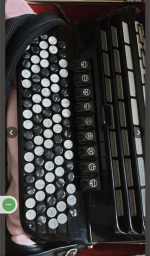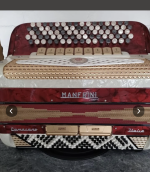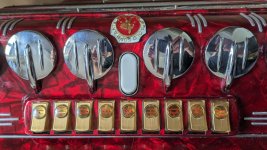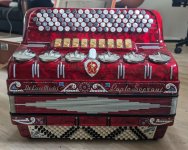Hi,
I'm new in the forum.
I decided to buy my first chromatic button accordion. I have a piano accordion with 40 basses and no registers which I barely know how to play.
After reading and watching videos and asking some musicians I decided to buy one with a C system.
I found a second hand accordiola super casotto for 540 euros. It has 9 registers but if I'm not wrong it has no MM? Is that important?(I attached a pictures) Does it sound like a good instrument for a beginner? Is the price alright? I checked on different sites and I found the same accordion from much cheaper to much more expensive.
I also found a Manfrini (I attached a pic too) for 360 euros. Same registers on the right side, I think, but registers in the left side (?) and no casotto. I understand that the cassotto makes the sound more mellow. I'm not sure if I'm still able to make the difference.
I prefer the sound to be not super wet.
I found cheaper instruments but with less basses, or less registers.
Any advice will be much appreciated.
Thanks!
I'm new in the forum.
I decided to buy my first chromatic button accordion. I have a piano accordion with 40 basses and no registers which I barely know how to play.
After reading and watching videos and asking some musicians I decided to buy one with a C system.
I found a second hand accordiola super casotto for 540 euros. It has 9 registers but if I'm not wrong it has no MM? Is that important?(I attached a pictures) Does it sound like a good instrument for a beginner? Is the price alright? I checked on different sites and I found the same accordion from much cheaper to much more expensive.
I also found a Manfrini (I attached a pic too) for 360 euros. Same registers on the right side, I think, but registers in the left side (?) and no casotto. I understand that the cassotto makes the sound more mellow. I'm not sure if I'm still able to make the difference.
I prefer the sound to be not super wet.
I found cheaper instruments but with less basses, or less registers.
Any advice will be much appreciated.
Thanks!





